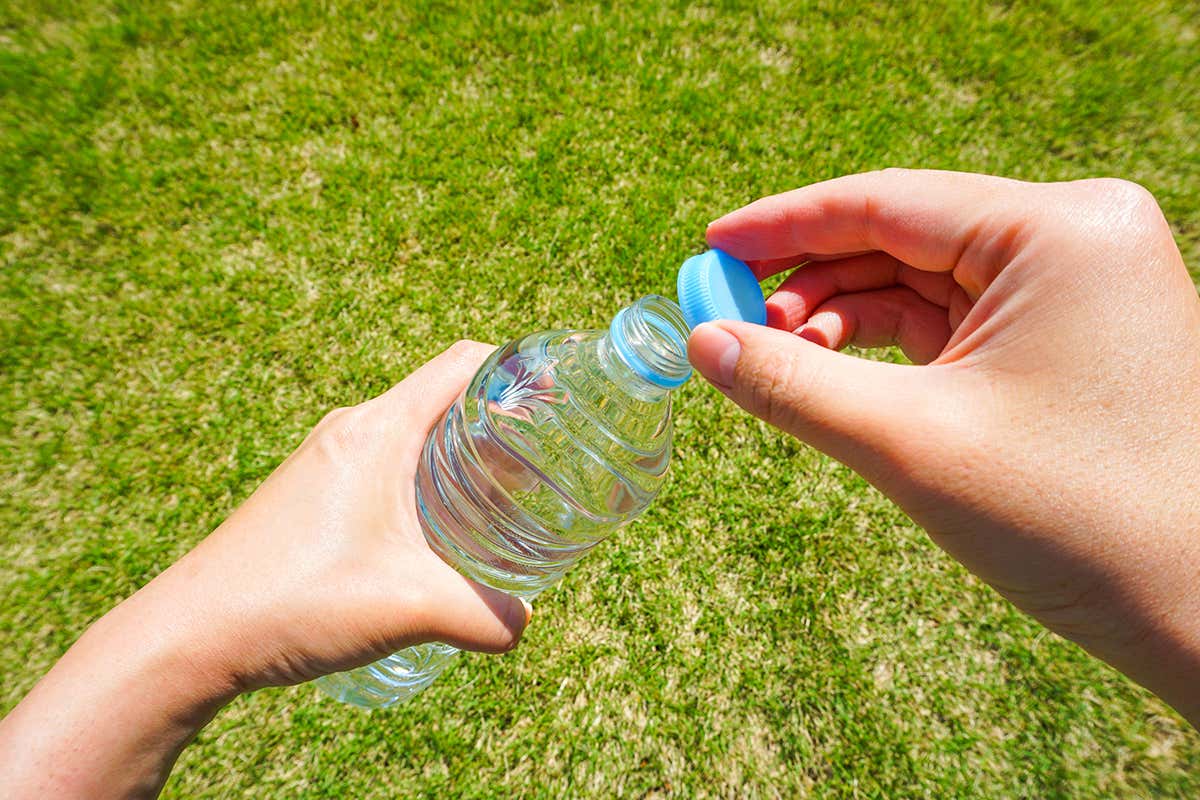Go !zerowaste@slrpnk.net ! Stop buying plastic bottle when you want water.
Thanks for linking that community.
On top of you advice: IMO if the tap water is safe for drinking, use that and don’t buy bottled water at all. No need to add to the plastic problem. Also: it’s usually cheaper.
oh well
Til that OP has no concept of what a particle is or how small it is or how many of them there are in any given scenario because our brains did not evolve to process that kind of scale accurately.
That seems more like your problem than OP’s.
Lmao, bruh here thinks his brain evolved to process scales of millions and comprehend a nanometer.
Are you a special unique bro different from everyone else?
It’s 14,000 to 75,000, not millions.
Microplastics are in the range of one micrometer to five millimeters, not nanometers.
That changes literally nothing of what I said. Your brain did not evolve to process those scales accurately. If you think you can, that just means you’re lacking in self reflection.
Being factually incorrect about literally everything you said changes nothing? Okay.
More importantly, humans are capable of abstract thought. Your whole argument is specious. If you find yourself lacking the context to understand these numbers, you can easily seek context. A good starting place would be the actual paper, which is linked in OP’s article. For the lazy: https://www.nature.com/articles/s41598-020-61146-4
Being factually incorrect about literally everything you said changes nothing? Okay.
Yeah bruh, it’s this little thing called being pedantic.
If I say wealth inequality is crazy, no one should have 250 billion dollars, and you say ‘well actually Jeff Bezos only has 210 billion dollars’, then I will be factually incorrect and my point will still be completely valid.
Did you really just compare the difference between 210 billion and 250 billion to the difference between 14,000 to 75,000 vs millions and one micrometer to five millimeters vs nanometers?
Just posted the article. Why not be constructive and post something more informative?
Because pop science articles often throw out bullshit like “blowing your nose can cause you to expel over 100 germs” because they know that 100 sounds like a big number and will get clicks.
People not questioning the actual context and meaning behind those numbers and how they connect back to something we actually care about leads to a lot of bullshit science reporting.
Pay to read the rest, and no sources linked as far as I can find. They are using a proxy to figure out the weight without bothering to eliminate a bunch of variables either.
Nano and micro plastics are a thing, and it’s bad. Just like this article
I have one installed, but if I’m sharing, I copy the URL and go to https://achive.today and see if they have it. If they don’t, I ask them to archive it then share it.
Here is a link if you (or anyone else) is interested: https://archive.is/BW4Tp
Yoink, I will be using that
I mean, you literally just open it in a browser with a paywall remover. It takes less effort than fucking moaning about paywalls -
Tiny pieces of plastic that pollute the environment can be produced by simply opening a plastic bottle or tearing a food wrapper.
Microplastics are between 0.001 and 5 millimetres in size and are usually either produced directly, or form when large plastic debris breaks up. We now know that millions of tonnes of microplastics are abundant in the environment and can harm marine life by entering the food chain. Microplastics are also found in our food, although the effect on human health is still unclear.
“Plastic is everywhere and enters our daily lives – and microplastics might be there as well,” says Cheng Fang at the University of Newcastle, Australia.
He and his colleagues tested whether everyday activities could release microplastics. They opened common plastic items such as bags, bottles and packaging film by twisting the bottle cap or tearing the bag, for example, or by cutting them with scissors or a knife, which deforms and fractures the plastic. Read more: Plastic tea bags shed billions of microplastic particles into the cup
The team used a scale that is sensitive to weights as low as one nanogram to collect and measure the microplastics that landed on its surface. Between about 10 and 30 nanograms of microplastic were released from opening the plastic items, which amounts to between 14,000 and 75,000 individual microplastic particles. But the team says that the true amount released is probably even higher, because many microplastics are statically charged and remain in the air.
Studying the microplastics with a microscope revealed that most were in the form of fragments or fibres of varying shape and size. Some could be seen with the naked eye, such as those from cutting bottles. The team also used a technique called spectroscopy to deduce the microplastics’ chemical composition and found the majority were made of polyethylene, one of the most widely used plastics.
“This finding sends an important warning,” says Fang. “We might need to take our own responsibility and work with industry together to reduce [microplastics].”
“You’d love to say that you’re surprised and shocked at the results, but unfortunately, you’re not. We’re now realising that microplastics are literally everywhere,” says Christian Dunn at Bangor University, UK. It is now crucial that we work to find out the possible health effects of microplastics and cut back on unnecessary plastic use, he says.
Nature Scientific Reports DOI: 10.1038/s41598-020-61146-4
Your paywall remover didn’t actually reveal anything more?? Or perhaps this article is just shit.
I’ll have to find one. Thank you!
They link to the full source paper: https://www.nature.com/articles/s41598-020-61146-4
Damn, how have I not heard of this before? I always thought it got dumped into landfills and eventually degraded to tiny particles. If it’s released so directly, it feels a lot more viable to reduce exposure by avoiding plastics…




